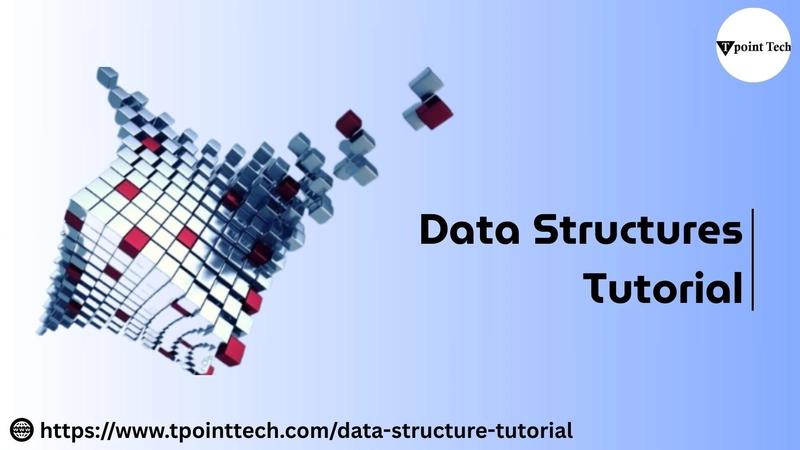Data Structures Tutorial: A Complete Guide for Beginners
In the world of computer science and programming, data structures form the backbone of how information is organized, processed, and stored. Whether you're a new developer or someone looking to strengthen your programming foundation, understanding data structures is essential for writing efficient and optimized code. This Data Structures Tutorial will walk you through the basics, helping you build a solid understanding from the ground up. What is Data Structure? To begin with, let's answer a common question: what is data structure? A data structure is a way of organizing and storing data in a computer so that it can be accessed and modified efficiently. Think of it as a method of arranging data to suit specific tasks or operations. Just like physical filing systems help us organize papers, data structures help us manage digital data effectively. Different types of data structures serve different purposes. Some are ideal for searching, some for sorting, and others for managing hierarchical relationships or sequences. Choosing the right data structure can drastically improve the performance of your program. Why Are Data Structures Important? The importance of data structures cannot be overstated. Here are a few reasons why they matter: - Efficiency: Proper data structures make programs faster and reduce memory usage. - Organization: They help keep data in a logical format, making it easier to access and manipulate. - Scalability: Efficient structures ensure your program can handle large amounts of data as it grows. - Problem-solving: Many coding problems rely on understanding the right structure to solve them effectively. Learning how to use data structures is like learning how to use the right tool for a job. You could hammer a nail with a wrench, but a hammer will do it much better. Basic Types of Data Structures This Data Structures Tutorial focuses on the fundamental types of data structures that beginners should learn first. Here are some of the most common and important ones: 1. Arrays Arrays are one of the simplest and most commonly used data structures. They store elements of the same type in a fixed-size, ordered collection. Each item in an array can be accessed directly using its index. 2. Linked Lists Unlike arrays, linked lists store elements in a sequence of nodes, where each node contains the data and a reference to the next node. This makes insertion and deletion operations more efficient in many scenarios. 3. Stacks Stacks operate on the principle of Last In, First Out (LIFO). Think of it like a stack of plates—you can only take the top plate off first. Stacks are useful for undo operations, syntax parsing, and backtracking algorithms. 4. Queues Queues follow the First In, First Out (FIFO) principle. They are used in scenarios like task scheduling and buffering, where the order of processing matters. 5. Trees Trees are hierarchical structures that branch out from a root node. They are used for organizing data with a hierarchical relationship, such as folders in a file system or data in a database. 6. Graphs Graphs consist of nodes (also called vertices) and connections between them (called edges). They are ideal for modeling networks, like social media connections or transportation systems. 7. Hash Tables Hash tables store data in key-value pairs, allowing for very fast data retrieval. They're commonly used in databases, caches, and lookup operations. Choosing the Right Data Structure Selecting the appropriate data structure depends on the problem you’re trying to solve. If you need fast access by index, arrays may work well. If you need to constantly add or remove items, a linked list or a queue might be a better choice. Understanding the trade-offs of each structure—such as memory usage, speed of access, and ease of modification—is key to writing effective programs. This Data Structures Tutorial aims to help beginners develop that intuition over time. Real-Life Applications To make things more relatable, here are a few everyday examples where data structures come into play: - Search Engines: Use trees and hash tables to index and retrieve results quickly. - Social Networks: Use graphs to model relationships and interactions between users. - Navigation Apps: Use graphs and algorithms to calculate the shortest path between locations. - Online Shopping: Use queues and stacks to manage orders, cart items, and browsing history. Final Thoughts Mastering data structures is a crucial step in becoming a proficient developer. With this Data Structures Tutorial, you’ve taken the first step toward understanding how data is organized and manipulated in software development. The more you practice and explore these concepts, the more confident you'll become in solving complex problems efficiently. Remember, data structures are not just academic c

In the world of computer science and programming, data structures form the backbone of how information is organized, processed, and stored. Whether you're a new developer or someone looking to strengthen your programming foundation, understanding data structures is essential for writing efficient and optimized code. This Data Structures Tutorial will walk you through the basics, helping you build a solid understanding from the ground up.
What is Data Structure?
To begin with, let's answer a common question: what is data structure?
A data structure is a way of organizing and storing data in a computer so that it can be accessed and modified efficiently. Think of it as a method of arranging data to suit specific tasks or operations. Just like physical filing systems help us organize papers, data structures help us manage digital data effectively.
Different types of data structures serve different purposes. Some are ideal for searching, some for sorting, and others for managing hierarchical relationships or sequences. Choosing the right data structure can drastically improve the performance of your program.
Why Are Data Structures Important?
The importance of data structures cannot be overstated. Here are a few reasons why they matter:
- Efficiency: Proper data structures make programs faster and reduce memory usage.
- Organization: They help keep data in a logical format, making it easier to access and manipulate.
- Scalability: Efficient structures ensure your program can handle large amounts of data as it grows.
- Problem-solving: Many coding problems rely on understanding the right structure to solve them effectively.
Learning how to use data structures is like learning how to use the right tool for a job. You could hammer a nail with a wrench, but a hammer will do it much better.
Basic Types of Data Structures
This Data Structures Tutorial focuses on the fundamental types of data structures that beginners should learn first. Here are some of the most common and important ones:
1. Arrays
Arrays are one of the simplest and most commonly used data structures. They store elements of the same type in a fixed-size, ordered collection. Each item in an array can be accessed directly using its index.
2. Linked Lists
Unlike arrays, linked lists store elements in a sequence of nodes, where each node contains the data and a reference to the next node. This makes insertion and deletion operations more efficient in many scenarios.
3. Stacks
Stacks operate on the principle of Last In, First Out (LIFO). Think of it like a stack of plates—you can only take the top plate off first. Stacks are useful for undo operations, syntax parsing, and backtracking algorithms.
4. Queues
Queues follow the First In, First Out (FIFO) principle. They are used in scenarios like task scheduling and buffering, where the order of processing matters.
5. Trees
Trees are hierarchical structures that branch out from a root node. They are used for organizing data with a hierarchical relationship, such as folders in a file system or data in a database.
6. Graphs
Graphs consist of nodes (also called vertices) and connections between them (called edges). They are ideal for modeling networks, like social media connections or transportation systems.
7. Hash Tables
Hash tables store data in key-value pairs, allowing for very fast data retrieval. They're commonly used in databases, caches, and lookup operations.
Choosing the Right Data Structure
Selecting the appropriate data structure depends on the problem you’re trying to solve. If you need fast access by index, arrays may work well. If you need to constantly add or remove items, a linked list or a queue might be a better choice.
Understanding the trade-offs of each structure—such as memory usage, speed of access, and ease of modification—is key to writing effective programs. This Data Structures Tutorial aims to help beginners develop that intuition over time.
Real-Life Applications
To make things more relatable, here are a few everyday examples where data structures come into play:
- Search Engines: Use trees and hash tables to index and retrieve results quickly.
- Social Networks: Use graphs to model relationships and interactions between users.
- Navigation Apps: Use graphs and algorithms to calculate the shortest path between locations.
- Online Shopping: Use queues and stacks to manage orders, cart items, and browsing history.
Final Thoughts
Mastering data structures is a crucial step in becoming a proficient developer. With this Data Structures Tutorial, you’ve taken the first step toward understanding how data is organized and manipulated in software development. The more you practice and explore these concepts, the more confident you'll become in solving complex problems efficiently.
Remember, data structures are not just academic concepts—they are practical tools that can dramatically improve your coding skills and open doors to more advanced programming topics. Keep learning, keep experimenting, and soon you'll feel right at home navigating the world of data structures.








































































